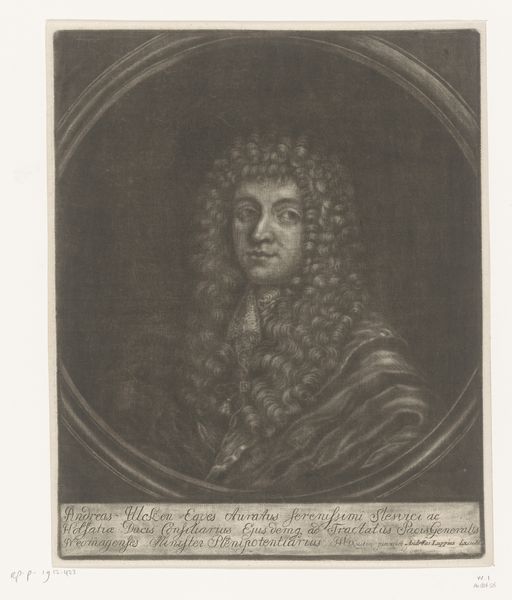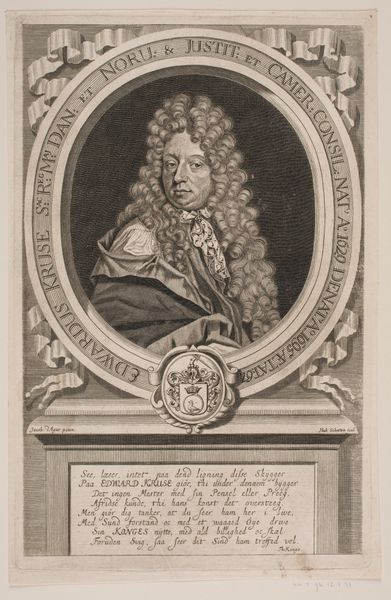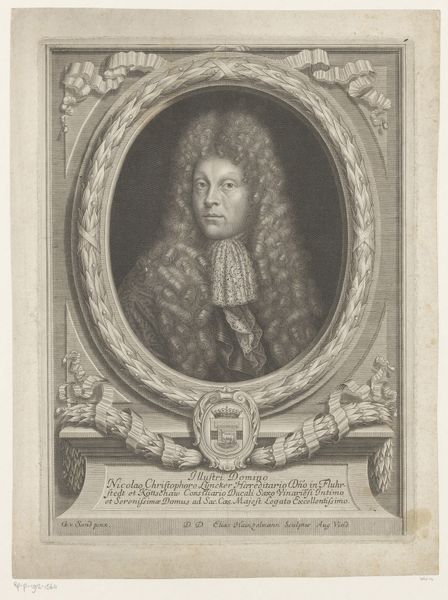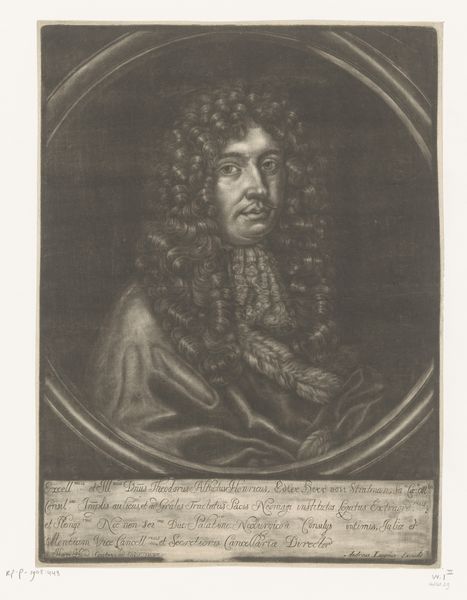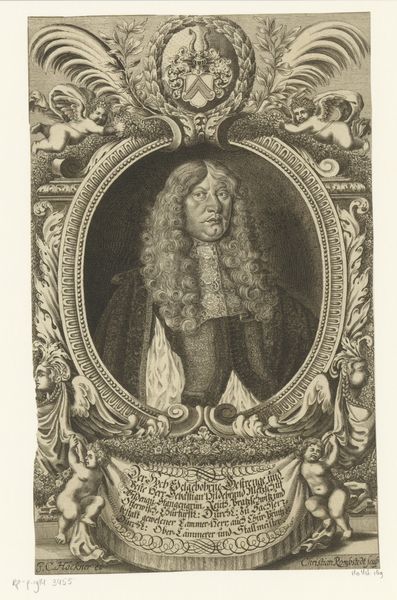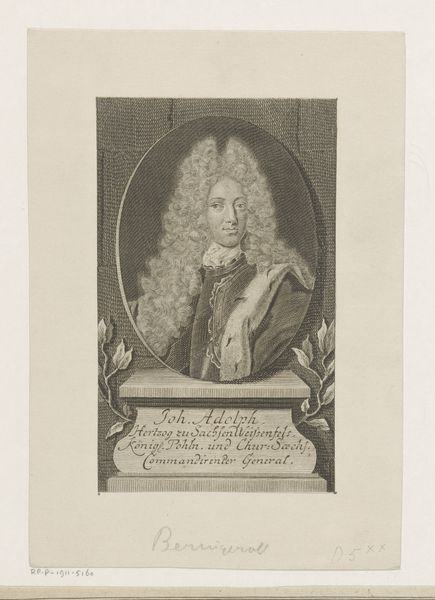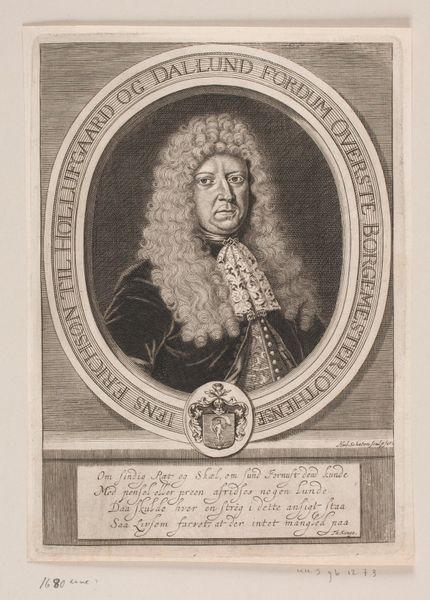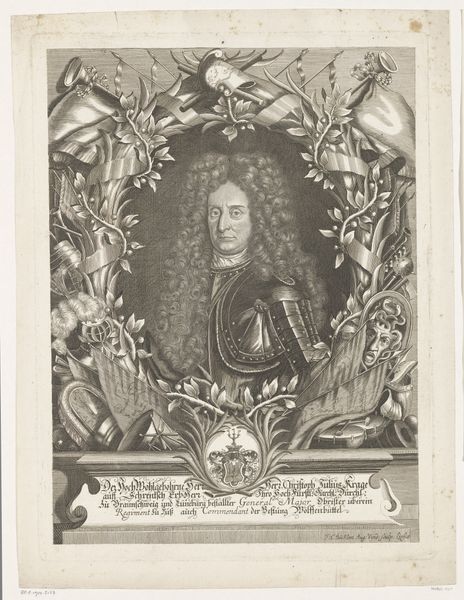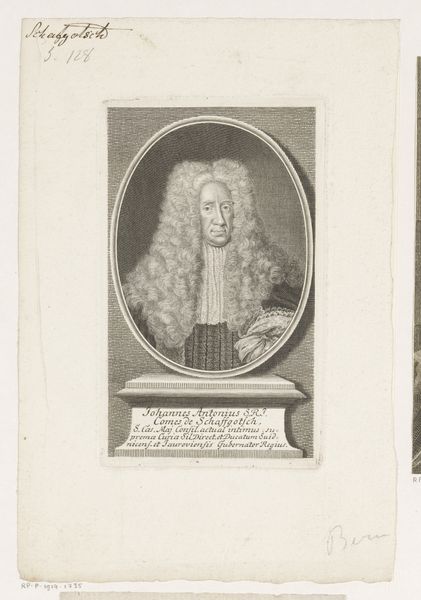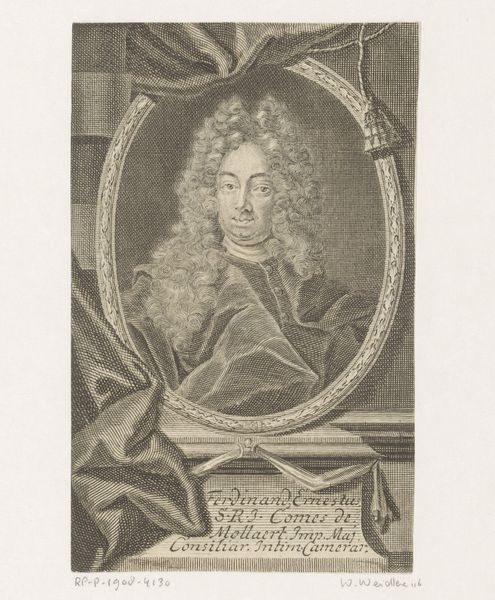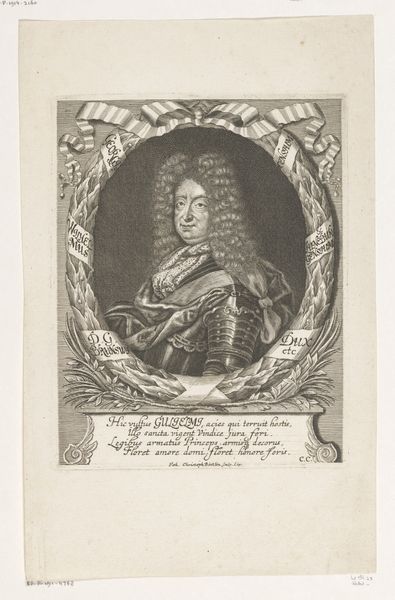
print, engraving
#
portrait
#
baroque
# print
#
pen illustration
#
old engraving style
#
caricature
#
form
#
line
#
history-painting
#
engraving
Dimensions: height 192 mm, width 146 mm
Copyright: Rijks Museum: Open Domain
Curator: This engraving is a portrait of Georg August von Stange, dating from between 1665 and 1721. Look at the meticulous detail achieved through the print medium. Editor: It’s rather austere. The formal pose, dark shading, and that resolute expression convey an overwhelming sense of authority. There is something interesting in this face, a peculiar mixture of vanity and seriousness. Curator: That's fascinating! To truly unpack the layers here, it is crucial to understand that in the 17th and early 18th centuries, portraiture like this wasn't just about capturing a likeness. It was about constructing and conveying social status, legitimacy, and power within a very rigid social hierarchy. Stange's attire, particularly his armor, functions as a signifier of military rank. Editor: Absolutely. His armor also ties into symbolic ideas about honor and strength, which had long histories. I'm drawn to the heraldry and other emblematic forms scattered throughout. The cartouches at the top corners and the medallion on the ledge. They are almost a visual glossary to his identity. Each image is charged with meaning. It also emphasizes how closely identity and positionality were intertwined in that historical moment. Curator: And what is remarkable about this particular print is that despite the constraints of the printmaking form, and its dependence on lines and hatching to generate tone, texture, and form, the artist succeeded in individualizing this member of the officer core. Editor: Exactly. It makes me wonder what messages it was meant to send. Even now, with all the historical distance, the portrait's coded visuals trigger associations with governance, responsibility, and even mortality. This is someone conscious of his place in society. The symbols operate even today, which speaks to how cultural memory continues to work through such symbols. Curator: What you have touched upon brings forth questions regarding representation. Whose perspectives are reflected in the official portrayal? Do marginalized groups even factor in, beyond being acted upon, either directly or indirectly? These sorts of period portraits serve to reinforce those issues. Editor: It's true. By decoding some of the symbols and getting insight from period records we have an interesting approach. What begins to surface, in the end, is an intriguing combination of artistic expression, symbolic language, and enduring social values. Curator: Agreed. Editor: Agreed, fascinating!
Comments
No comments
Be the first to comment and join the conversation on the ultimate creative platform.

